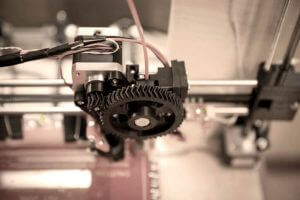3D Printing and Additive Manufacturing for Hydroforming
Hydroforming
If your experience with 3D printers has been limited to seeing one at a conference, at a science fair or watching a video on YouTube, you may think the technology has little practicality beyond small toys and trinkets. But for many manufacturers, 3D printing is becoming an integral part of the creative process
At Jones Metal, we’re pretty excited about what 3D printing, or additive manufacturing, is doing for us and our customers.
If you’re not familiar with additive manufacturing, it’s helpful to think first about what it’s not “traditional” manufacturing. Techniques and tools used in traditional manufacturing, such as milling and lathes, are subtractive manufacturing. That’s because those methods remove, or subtract, material to create a completed part. Additive manufacturing on the other hand, is the opposite. A part is completed by printing layer on top of layer to create a finished product.

While we create components using the hydroforming process, our engineers and technicians are taking advantage of 3D printing by incorporating it into the first steps of our quoting and project start process. Using our Ultimaker 2 Extended printer, we print a scale model of each component we’re being asked to form. And by being able to inspect a scale or full-size, three-dimensional model, we can make a thorough assessment of the type of forming techniques that are most suited to the part, cutting the costs and the time involved for decision making.
In our experience, we’ve found there is no industry for which additive manufacturing can’t play an important role. We have used it to create scale models of parts for power generation turbines, aerospace heat exchangers and adaptive parts for military components. We’ve even used it to help spec projects for off-road racing.
Incorporating 3D printing into our operations has also helped to unleash the creativity of our talented engineers and machinists. Shortly after introducing the machine, our staff began creating pieces that have improved operational efficiency, like tool organizers, wire routing hardware, hose holders and other customized tools for our machine operators and maintenance personnel.
We also recognize how additive manufacturing can capture the interest of students, so we’ve begun demonstrating the machine to local school students. It’s an engaging way to introduce young people to the world of modern manufacturing and all its possibilities.
With a little help from 3D printing technology, Jones Metal will create a scale model component for improved efficiency and a shorter lead time. If you would like to see the benefits of additive manufacturing in your next order, contact us today.
